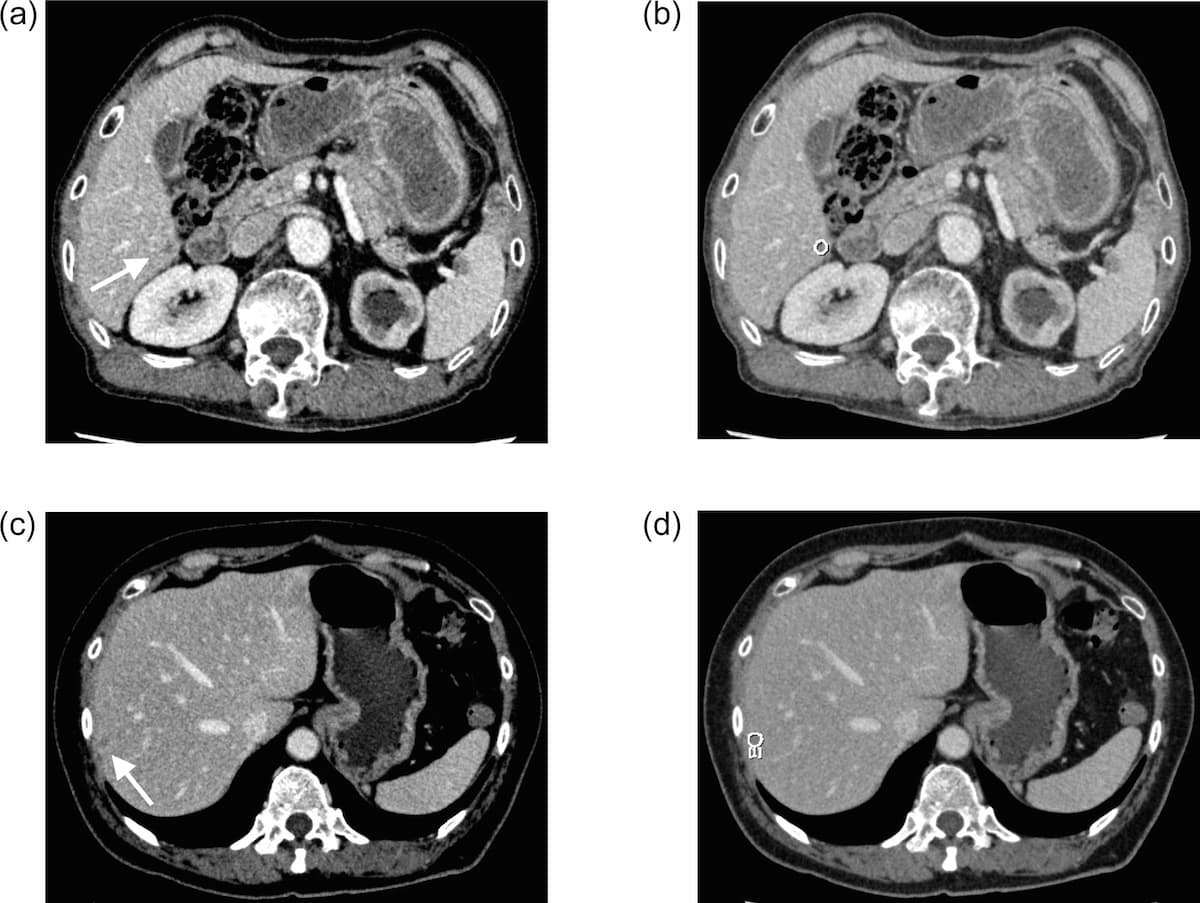Study Looks at Capability of AI for Detecting Overlooked Liver Metastases on CECT
An emerging artificial intelligence (AI) software reportedly detected liver metastases in 53.7 percent of cases involving missed findings by radiologists.
Artificial intelligence (AI) diagnosed liver metastases overlooked by radiologists on abdominal computed tomography (CT) in more than half of the cases, according to newly published research.
For the study, published recently in the European Journal of Radiology, researchers assessed the sensitivity of an emerging AI software (Care Advisor for Liver, co-developed by IBM Watson Health and Guerbet) in 135 patients with liver metastases for all liver lesion types, liver metastases and liver metastases overlooked by radiologists on contrast-enhanced CT (CECT).
The researchers found that the AI software concurred with radiologist findings in 92.7 percent of cases involving detected liver metastases and detected liver metastases in 53.7 percent of cases in which liver metastases were overlooked by radiologists. The AI software had an 0.48 average of false positives per patient, according to the study.
“Although this software version does not classify the detected lesions, our results have indicated its potential in reducing the number of overlooked liver metastases and providing reference information to the investigating radiologists,” wrote Yuji Nakamoto, M.D., Ph.D., a professor in the Department of Diagnostic Imaging and Nuclear Medicine at the Kyoto University Graduate School of Medicine in Japan, and colleagues.
Images courtesy of the European Journal of Radiology.

Overall, the study authors noted that the AI software demonstrated per-lesion sensitivity rates of 70.1 percent for all liver lesions, 70.8 percent for liver metastases and 55 percent for liver metastases overlooked by radiologists.
(Editor’s note: For related content, see “Current Perspectives on the BCLC Staging System for Hepatocellular Carcinoma” and “Could Photon Counting CT Supplant MRI for Imaging Assessment of Hepatic Steatosis?”)
Nakamoto and colleagues pointed out that the AI software failed to detect 16 percent of liver metastases diagnosed by radiologists and specifically noted a failure to diagnose liver metastases that contacted large hepatic veins.
“This leads us to believe that lesions surrounded by the liver parenchyma may be easier for the (AI) software to detect than those that are not,” suggested Nakamoto and colleagues. “Therefore, the software would not replace the radiologists. Instead, the software should be used in conjunction with the radiologists’ clinical interpretation.”
The study authors noted that the Care Advisor for Liver AI software is currently pending review by the Food and Drug Administration (FDA).
Beyond the inherent limitations of a single-center retrospective study, the researchers acknowledged a possible patient selection bias with the small heterogeneous cohort. Noting that all of the reviewed cases involved liver metastases and that the AI software does not classify benign/malignant lesions, the study authors did not assess specificity and accuracy rates of the AI modality.
Emerging AI Algorithm Shows Promise for Abbreviated Breast MRI in Multicenter Study
April 25th 2025An artificial intelligence algorithm for dynamic contrast-enhanced breast MRI offered a 93.9 percent AUC for breast cancer detection, and a 92.3 percent sensitivity in BI-RADS 3 cases, according to new research presented at the Society for Breast Imaging (SBI) conference.
Could AI-Powered Abbreviated MRI Reinvent Detection for Structural Abnormalities of the Knee?
April 24th 2025Employing deep learning image reconstruction, parallel imaging and multi-slice acceleration in a sub-five-minute 3T knee MRI, researchers noted 100 percent sensitivity and 99 percent specificity for anterior cruciate ligament (ACL) tears.